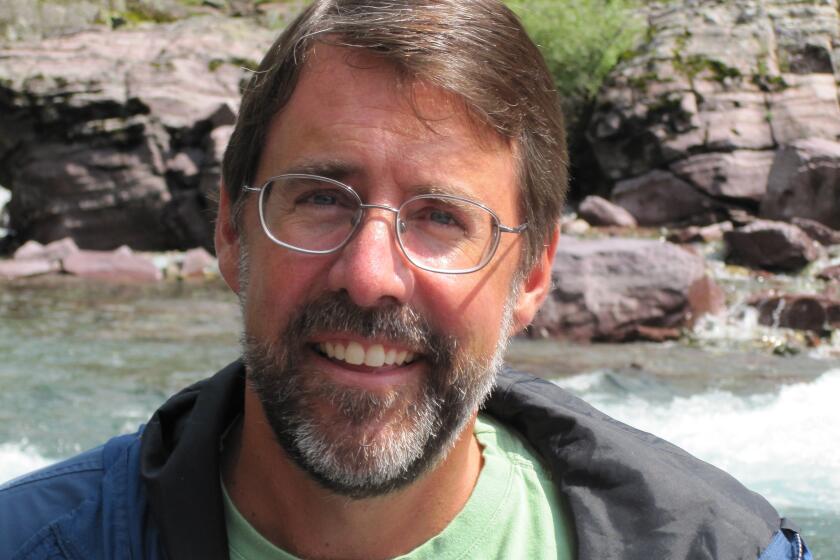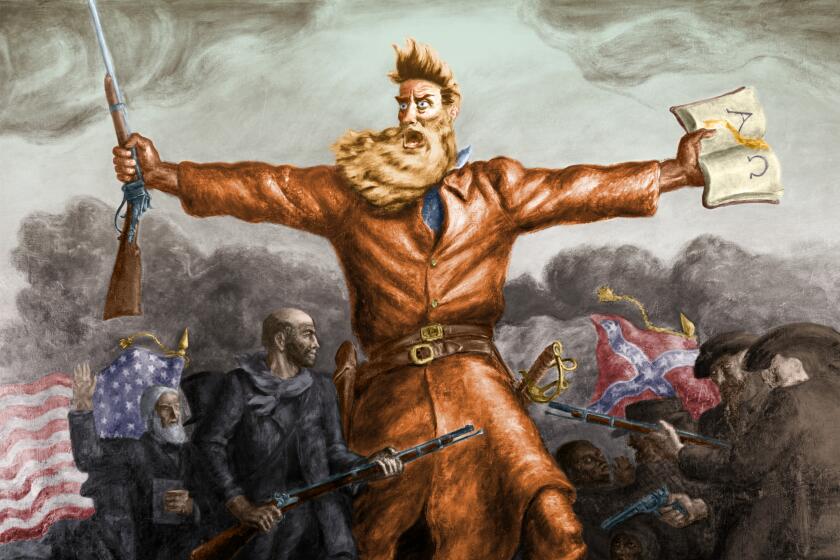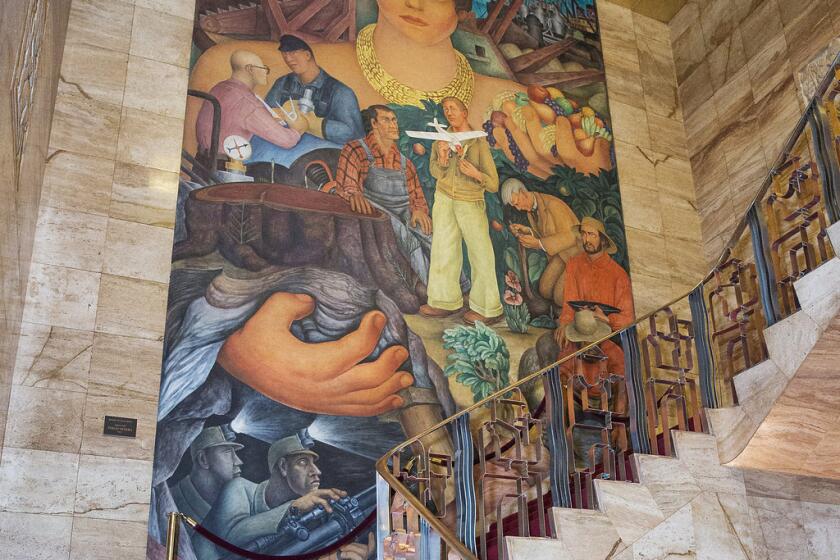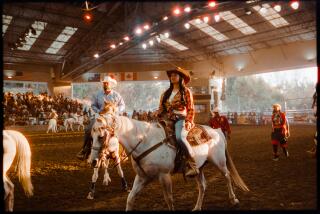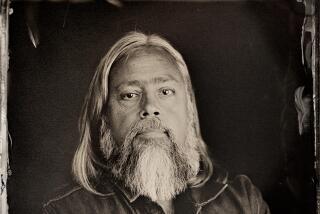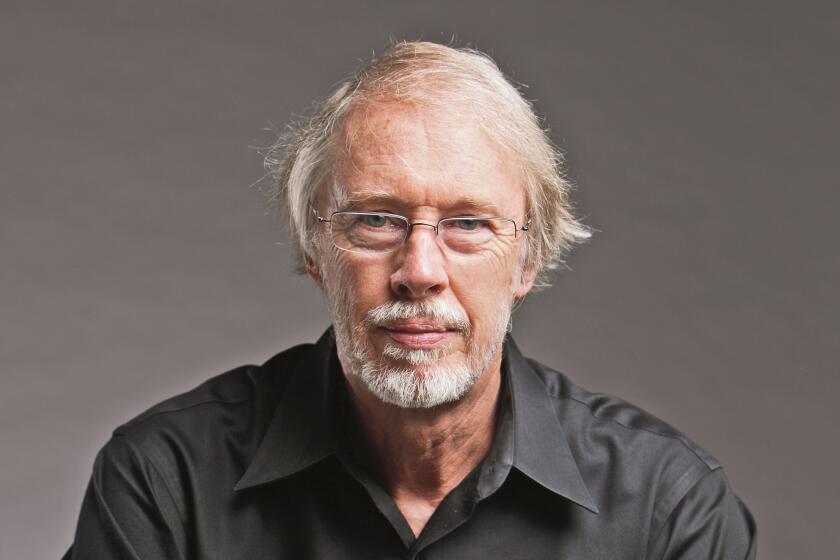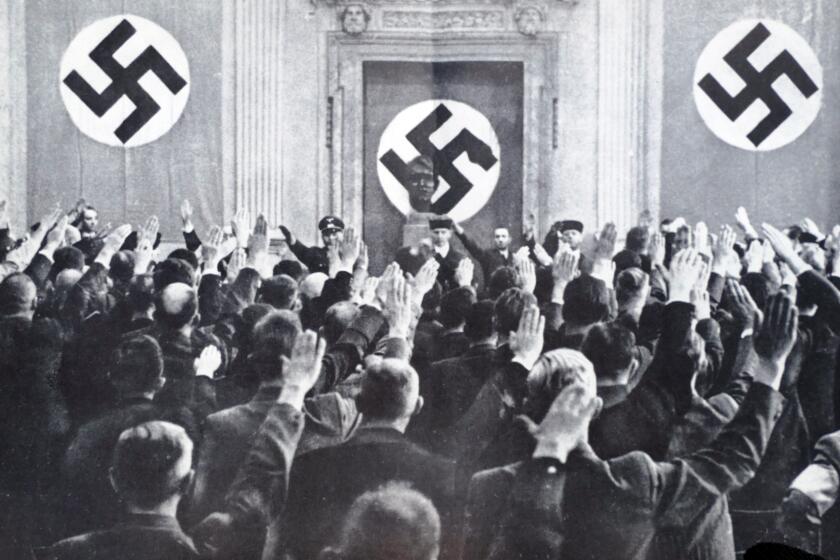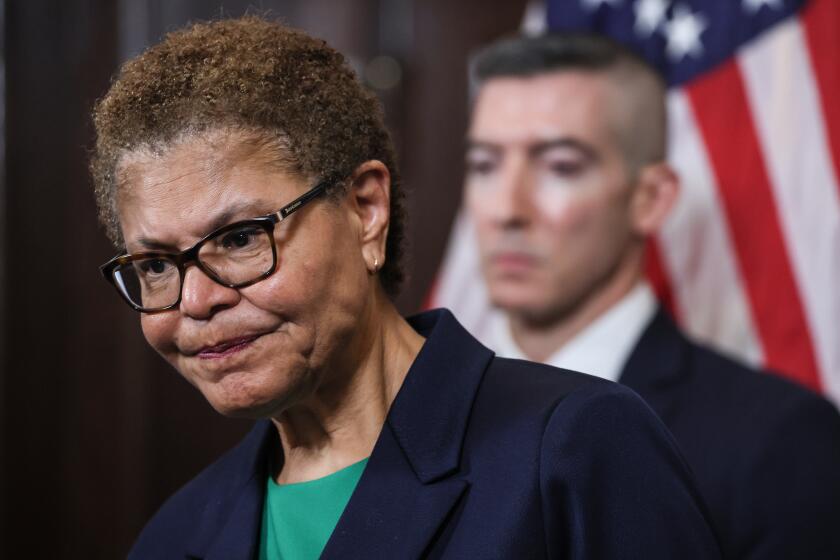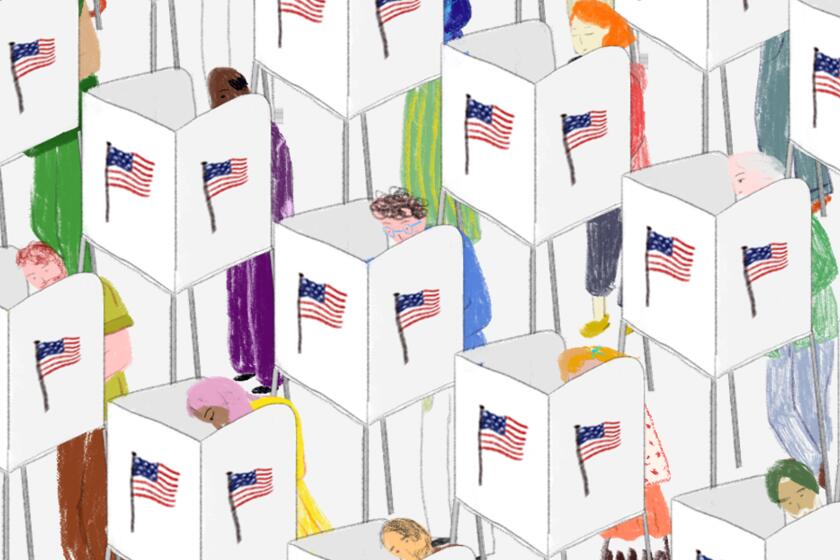The true stories of the Wild West’s last outlaws are better than fiction

Book Review
Bandit Heaven: The Hole-in-the-Wall Gangs and the Final Chapter of the Wild West
By Tom Clavin
St. Martin’s Press: 304 pages, $30
If you buy books linked on our site, The Times may earn a commission from Bookshop.org, whose fees support independent bookstores.
We like to mythologize our Western outlaws and their catchy nicknames, which often include the designation of “Kid” (Billy the Kid, the Sundance Kid or, if you’re a fan of John Ford’s “Stagecoach,” the Ringo Kid). Tom Clavin, the author of several books about the Old West, including “Dodge City,” “Tombstone” and the new “Bandit Heaven,” is after something more elusive: the facts, or at least something close to them. He isn’t a revisionist historian in the vein of, say, Richard Slotkin, whose books, including “Gunfighter Nation” and “Fatal Environment,” examine the foundational, blood-drenched myths of the United States. But the true stories Clavin recounts — and “Bandit Heaven” often reads like a series of enthralling yarns — are based in deep research.
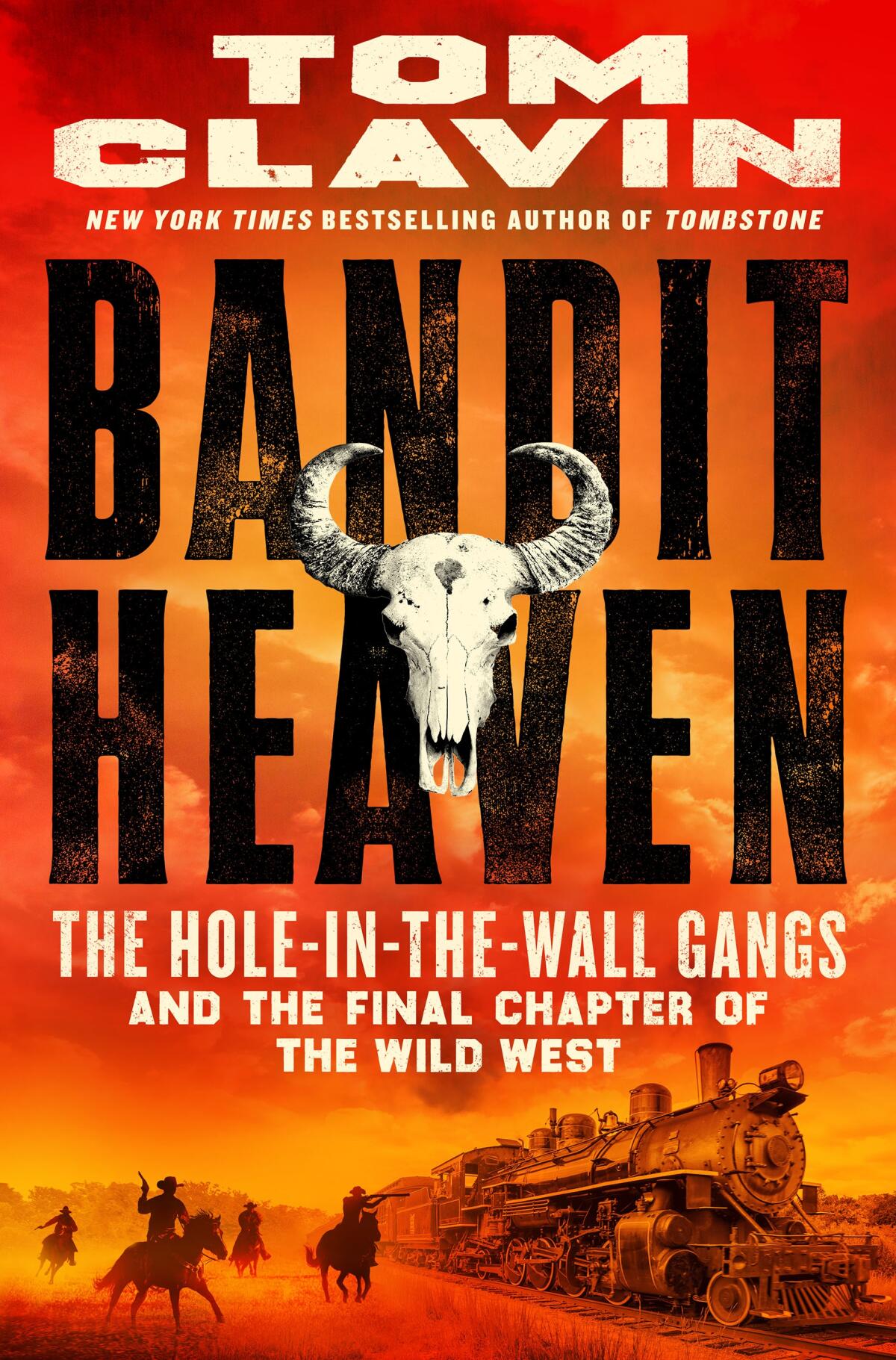
Which doesn’t mean they aren’t fun. In telling the tale of three late 19th century hideouts in Wyoming and Utah — Robbers Roost, Brown’s Hole and Hole-in-the-Wall — “Bandit Heaven” reminds us how colorful language was used to describe even the most dire circumstances. For instance, the winter of 1886-87 was so brutal, killing off people and an estimated 90% of cattle on the northern ranges of Wyoming, Montana and the Dakota Territory, that it came to be known as the Big Die-Up. If you’re gonna go, you might as well go in something called that.
Sometimes a random place name is enough to tickle the fancy. I’m rather partial to the town of Chugwater, Wyo., home of Two Bar Ranch. And of course there are the names of the miscreants and varmints themselves. Cherokee Bangs. George “Big Nose” Parrott (that’s just not nice). George “Flatnose” Currie (is that any kinder?).
The press could get in on the act as well. When homesteaders Ella Watson and James Avrell were lynched at the hands of avaricious ranchers who wanted their land, one newspaper headline summed up the crime thus: “Blaspheming Border Beauty Barbarously Boosted Branchward.”
In ‘A Place Called Yellowstone,’ environmental historian Randall K. Wilson traces the natural forces and the human clashes that created the world’s first national park.
As Clavin describes, the violence of the period was often perpetrated by consortiums of big land owners intent on swallowing up their smaller competition. The year 1891 saw the start of the Johnson County War, in which Wyoming cattle barons hired an assassination squad to eliminate small ranchers who had the temerity to erect barbed-wire fences around their land and cattle. The barons often had law enforcement in their pockets; as Clavin writes, “Even in the last days of the Wild West, there could be a thin line between lawman and outlaw.”
The Johnson County War was the basis of the 1980 movie “Heaven’s Gate,” a notorious flop that all but bankrupted its studio, United Artists, but remains ripe for reconsideration. The practice of cutting ranchers’ barbed-wire fences is an instigating plot point in the great 1940 Gary Cooper western “The Westerner.” But the true movie-stars-to-be in “Bandit Heaven” are Bob Parker and Harry Longabaugh, better known as Butch Cassidy and the Sundance Kid. Here, too, Clavin applies a bit of myth-busting. Parker/Cassidy certainly rode with Lonabaugh/Sundance, but his “best friend and chief sidekick in outlaw gangs he led” was a different man altogether, named Elzy Lay, who wasn’t blessed with a pithy moniker. The rather glib 1969 movie about Butch and Sundance (which came out the same year as a far superior western about the end of the frontier, “The Wild Bunch”), has forever cemented our conception of the duo as charming quipsters, a depiction that seems to have at least some basis in reality.
Some fear that if children learn about slavery, they will lose respect for the founders. But they can appreciate those who fought for equality.
In the words of Ford’s “The Man Who Shot Liberty Valance,” “When the legend becomes fact, print the legend.” But Clavin is generally more interested in the fact, and if he doesn’t necessarily render it with poetry or great imagination, he knows how to grind it out piece by piece, episode by episode. He does eventually get to Butch and Sundance, the Hole-in-the-Wall Gang and their pursuers, including Pinkerton detective Charlie Siringo, who infiltrated the gang (and was also on the scene of the 1886 Haymarket bombing and its aftermath in Chicago). When he wasn’t going after Western outlaws, Siringo was rounding up union members; at times it was hard to say which struck more fear in the hearts of government and law enforcement.
Clavin makes clear that cattle rustling was a routine operation in these times, often seen as a form of skimming from big ranchers by the cowboys hired to work the herds. Sometimes crime went unpunished in these late days of the frontier. And sometimes vengeance was taken with savage ferocity. “Bandit Heaven” is at its best when Clavin unleashes an anecdote of macabre detail. Which brings us back to our friend George “Big Nose” Parrott.
The degradation of two powerful, independent Muslim women — one historical, one fictional — echoes 500 years later in the name of our state.
The unfortunate outlaw was hanged from the crossbeam of a telephone pole after he and his train-robbing gang gunned down a pair of lawmen and Parrott attempted to escape from jail. Then things got weird. Two doctors decided to study his brain and its possible criminal inclinations. Clavin writes: “A death mask of Parrott’s face was created and skin from his thighs and chest was removed. The skin, including the dead man’s nipples, was sent to a tannery in Denver, where it was made into a medical bag and a pair of shoes.” One of the doctors, John Osborne, wore the shoes to his inaugural ball when he was sworn in as Wyoming’s first Democratic governor in 1893.
Who needs legend when the historical record offers such riches?
Chris Vognar is a freelance culture writer.
More to Read
A cure for the common opinion
Get thought-provoking perspectives with our weekly newsletter.
You may occasionally receive promotional content from the Los Angeles Times.
